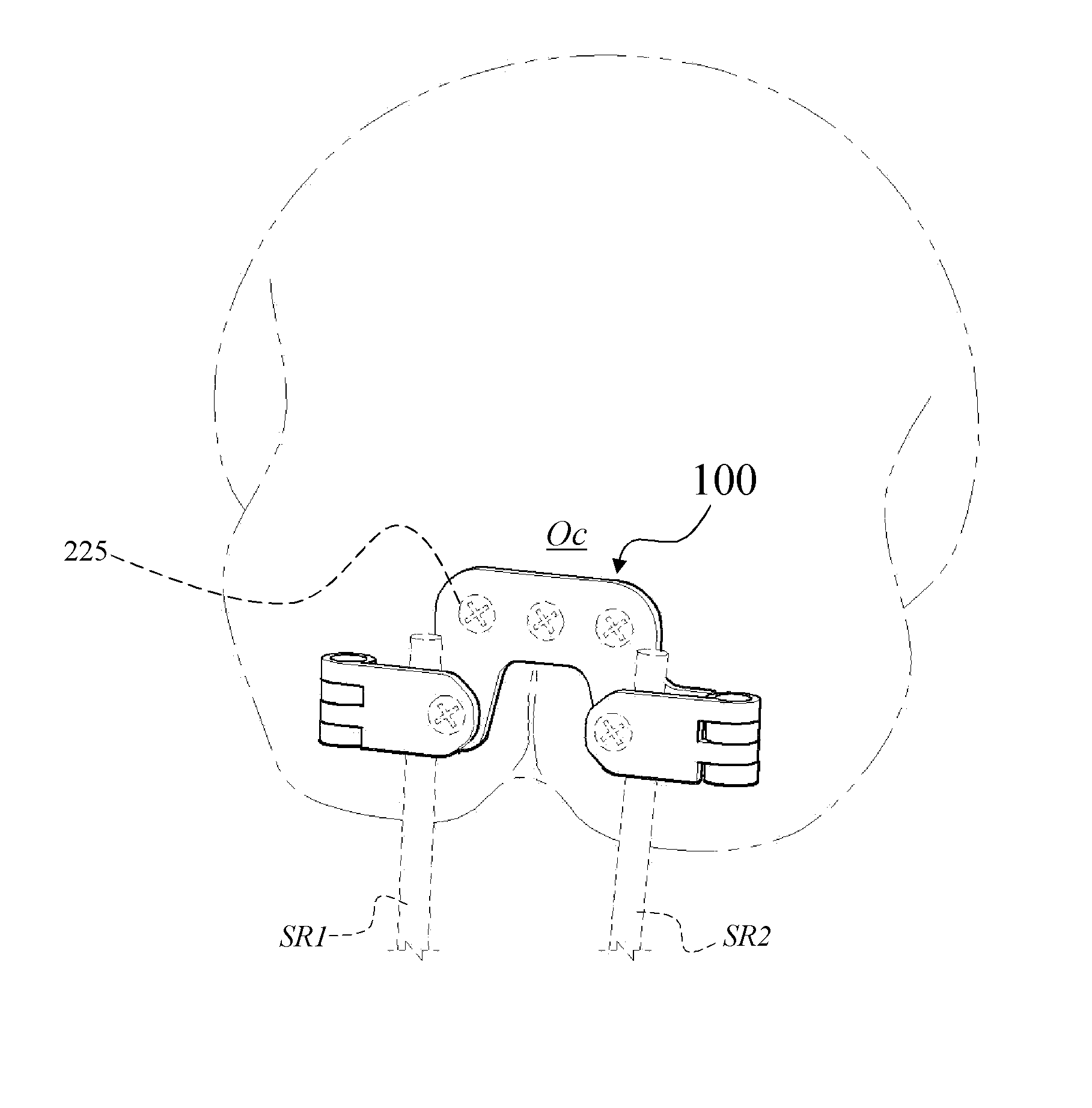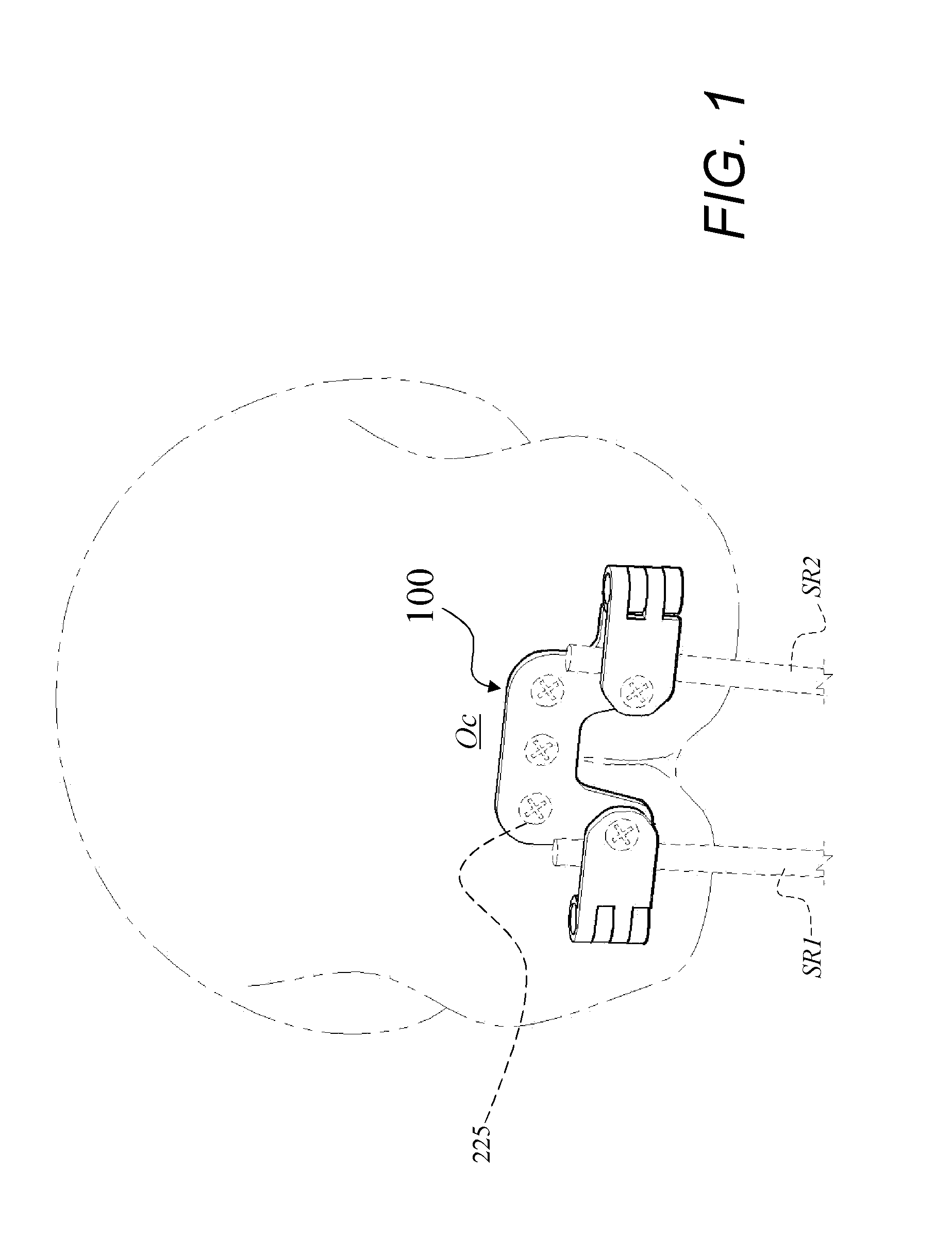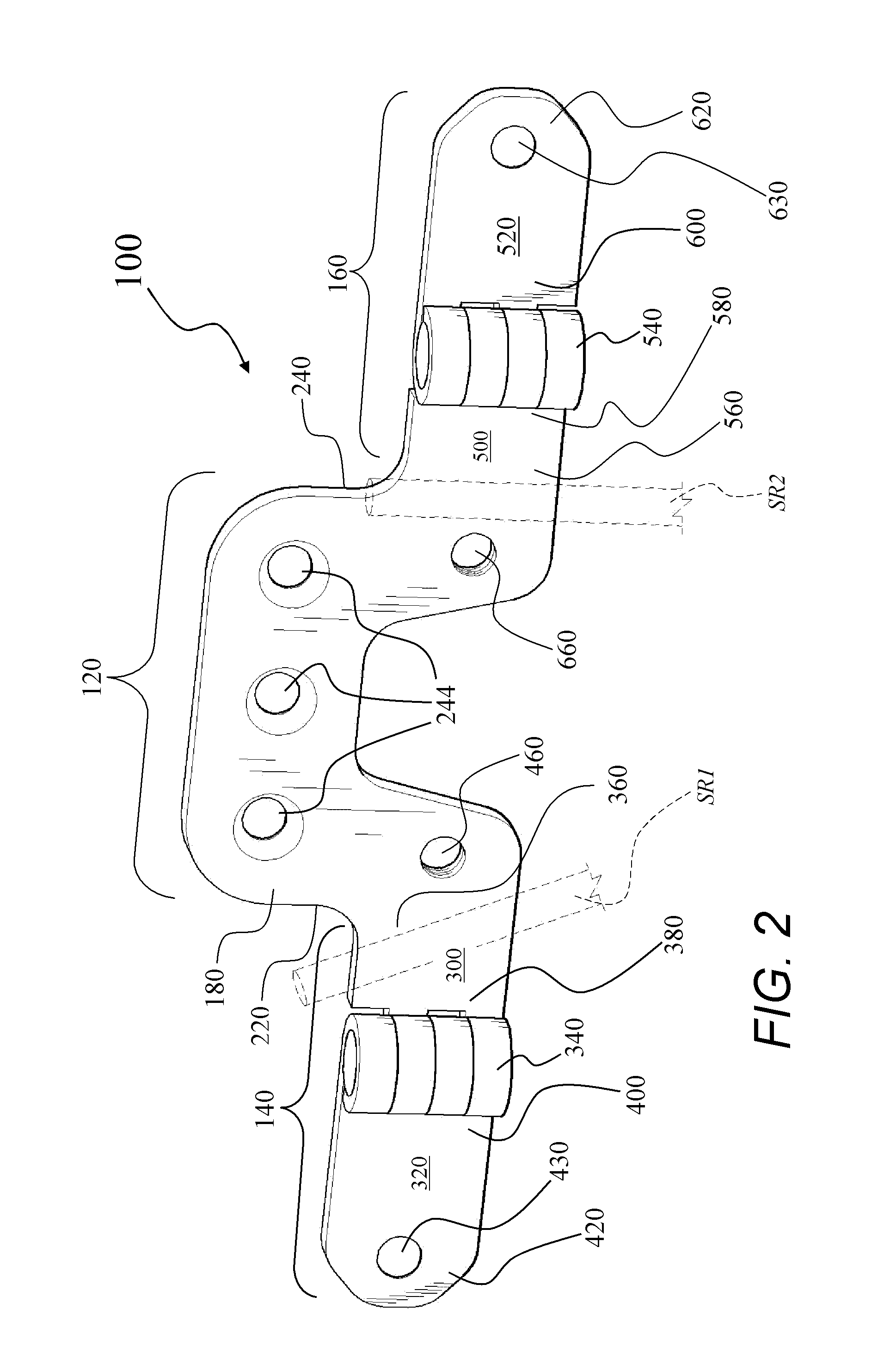Occipital plate
a technology of occipital plate and occipital plateau, which is applied in the field of occipital plate, can solve the problems of long preparation time, difficult use form, and difficult connection of implants to longitudinal rod members and occipital plateau without stressing atlantoaxial joints
- Summary
- Abstract
- Description
- Claims
- Application Information
AI Technical Summary
Benefits of technology
Problems solved by technology
Method used
Image
Examples
Embodiment Construction
[0020]This invention relates to medical devices. More specifically, the invention is directed to an occipital plate 100 for use in an occipitocervical fixation procedure. The occipital plate 100 and its parts can be made out of any suitable material such as, but not limited to, titanium, tungsten, and stainless steel, alone or in combination. Part numbers are listed in Table 1 (shown in FIG. 16).
[0021]The occipital plate 100 comprises a middle portion 120, a left hinged leg 140, and a right hinged leg 160. The occipital plate 100 defines a central axis line 130. While not necessary it is preferred that the occipital plate 100 exhibits 2-fold symmetry about central axis line 130. The middle portion 120 defines front 180 and rear 200 surfaces, and left 220 and right 240 opposite sides. Holes 244 extend from the front surface 180 through to the rear surface 200 of the middle portion 120 are provided for receiving bone fasteners 225 for fixation of occipital plate 100 to the occiput Oc,...
PUM
 Login to View More
Login to View More Abstract
Description
Claims
Application Information
 Login to View More
Login to View More - R&D
- Intellectual Property
- Life Sciences
- Materials
- Tech Scout
- Unparalleled Data Quality
- Higher Quality Content
- 60% Fewer Hallucinations
Browse by: Latest US Patents, China's latest patents, Technical Efficacy Thesaurus, Application Domain, Technology Topic, Popular Technical Reports.
© 2025 PatSnap. All rights reserved.Legal|Privacy policy|Modern Slavery Act Transparency Statement|Sitemap|About US| Contact US: help@patsnap.com



